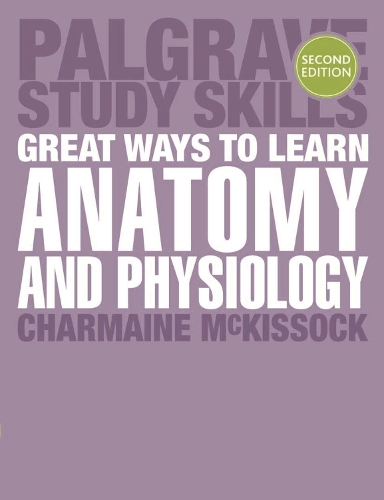
Great Ways to Learn Anatomy and Physiology
(Paperback, 2nd edition)
Available Formats
Paperback, 2nd edition
Published: 20th November 2014
Paperback, 3rd edition
Published: 8th February 2024
Publishing Details
Great Ways to Learn Anatomy and Physiology
By (Author) Charmaine McKissock
Bloomsbury Publishing PLC
Red Globe Press
20th November 2014
2nd edition
United Kingdom
Classifications
Tertiary Education
Non Fiction
612
Physical Properties
Paperback
192
Width 189mm, Height 246mm
354g
Description
This highly visual text is the perfect companion for anyone studying anatomy and physiology. Offering innovative techniques to help students with their learning, this user-friendly, accessible study skills text is the perfect accompaniment to any course or textbook. Complex processes are brought to life with imaginative diagrams and story lines which aid understanding, reinforce memory and also support students with memory, dyslexic or mathematical difficulties. This second edition features a fully updated section on first aid, and brand new content on making posters and presentations. New to this Edition: - Fully updated section on first aid - New content on creating posters and presentations
Reviews
'This new study guide [...] offers a refreshing way to learn anatomy and physiology. The book gives excellent tips to save time, make learning easier, improve memory and enhance our knowledge base.' - Nursing Standard 'This book has lots of different types of concept maps, flow diagrams and linear maps to show how information can be represented in a way that suits different learning styles. It also represents the same information (on digestion for example) in different ways using different maps/lists and demonstrates how each one can be used at different stages of the learning process, adding complexity. For example using exam style written answers using colour to highlight areas on the maps. As the student becomes more confident in their understanding and recall they can use different maps or use examples presented as Inspiration.' Kerry Pace, Specific Learning Difficulties (SpLD) Tutor, University of Hull
Author Bio
Charmaine McKissock has helped countless students find ways to learn more easily and succeed in their goals. She has contributed widely to the understanding of adult dyslexia and other learning differences. She has worked in college, university, health and community settings. She currently practises as a consultant, trainer, writer and illustrator.
